Hops in Beer Brewing: Gargoyle
Published: September 12, 2025 at 2:46:11 PM UTC
Beer brewing has seen a significant transformation with the advent of unique hop varieties like Gargoyle. Hailing from the United States, Gargoyle is celebrated for its distinct citrusy-mango flavor. This makes it a top choice among brewers. This hop variety stands out for its moderate alpha acid content. This characteristic makes it ideal for a variety of beer styles, including American IPAs and Pale Ales. By incorporating Gargoyle, brewers can enhance the flavor of their beers. This offers them the opportunity to create unique brews that stand out.
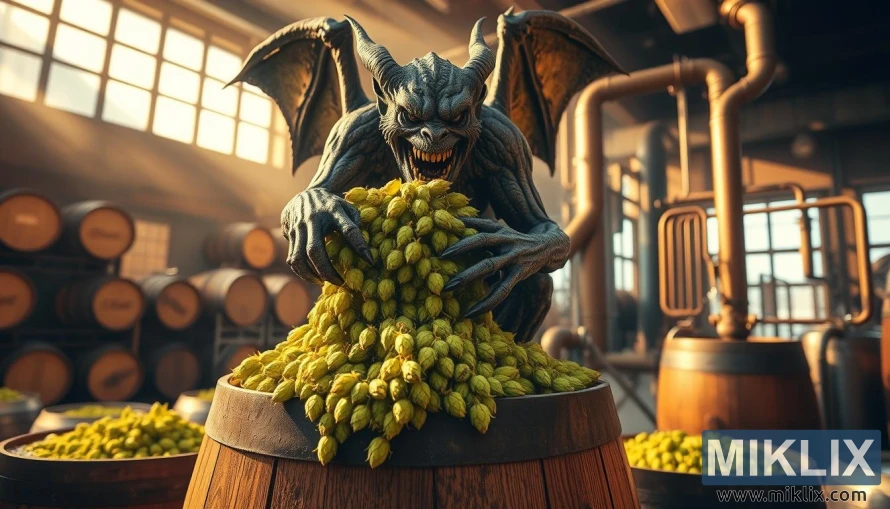
Key Takeaways
- Gargoyle is a unique hop variety with a citrusy-mango flavor profile.
- It is suitable for various beer styles, including IPAs and Pale Ales.
- Gargoyle has moderate alpha acid content.
- It is used to create distinctive beers with unique flavor profiles.
- Gargoyle originates from the United States.
Understanding Gargoyle Hops: Origins and History
The origins of Gargoyle hops trace back to Cluster hops, with a modern twist. This twist sets them apart from their predecessors. Gargoyle hops are a recent revival of Cluster hops, a staple in American brewing for decades.
Gargoyle hops have their roots in the United States, as an offspring of Cluster hops. This variety has been reintroduced with a modern twist. It offers brewers a unique flavor profile, blending citrusy and mango-like notes.
The history of Gargoyle hops is deeply connected to Cluster hops. These were widely used in American brewing from the 19th to the early 20th century. The re-emergence of Gargoyle hops has given brewers a new ingredient to explore.
Understanding Gargoyle hops' origins and history is key to appreciating their value in brewing. Knowing their background and development helps brewers harness their unique characteristics. This enables the creation of complex and flavorful beers.
Chemical Composition and Characteristics
Grasping the chemical makeup of Gargoyle hops is key to unlocking their full brewing prowess. These hops boast a moderate alpha acid content. This is a critical element in shaping the beer's bitterness.
The alpha acid range in Gargoyle hops spans from 4.3% to 8.4%. This makes them versatile for crafting a wide array of beer styles. Their balanced alpha acid levels ensure a bitterness that's neither overpowering nor too subtle. This balance is essential for brewers aiming to perfect their beer's flavor.
- Alpha acid content: 4.3% to 8.4%
- Beta acid profile: Moderate-low, contributing to a smooth finish
- Versatility in brewing: Suitable for various beer styles due to balanced bitterness and aroma
The beta acid profile of Gargoyle hops also significantly impacts their character. With a moderate-low beta acid level, these hops contribute to a beer's smooth finish. This enhances the beer's drinkability, making it more enjoyable for consumers.
Gargoyle hops stand out as a valuable addition to brewers' arsenals. Their balanced chemical makeup allows brewers to craft beers with nuanced and sophisticated flavor profiles. By harnessing these characteristics, brewers can create complex and refined brews.
Aromatic Profile of Gargoyle Hops
Gargoyle hops bring a refreshing citrusy-mango flavor, with tropical and floral undertones. This unique mix makes them perfect for brewers aiming to craft beers with complex tastes.
The citrusy notes in Gargoyle hops add a bright, uplifting quality to beers. The mango flavor adds a rich, fruity depth, improving the drinking experience. This combination makes Gargoyle hops versatile for many beer styles.
These hops also have subtle tropical and floral undertones. These nuances add layers to the beer's flavor, making it more interesting and dynamic. Achieving the right balance of these aromatic elements is key to the desired flavor profile.
When using Gargoyle hops, brewers can play with different hopping techniques. Late hopping or dry-hopping can highlight the citrus and mango flavors. Early additions contribute to the beer's bitterness and stability.
Understanding Gargoyle hops' aromatic profile is vital for brewers to fully utilize them. By leveraging these hops' unique characteristics, brewers can create a variety of beer styles. These beers showcase the complexity and depth of Gargoyle hops' flavor profile.
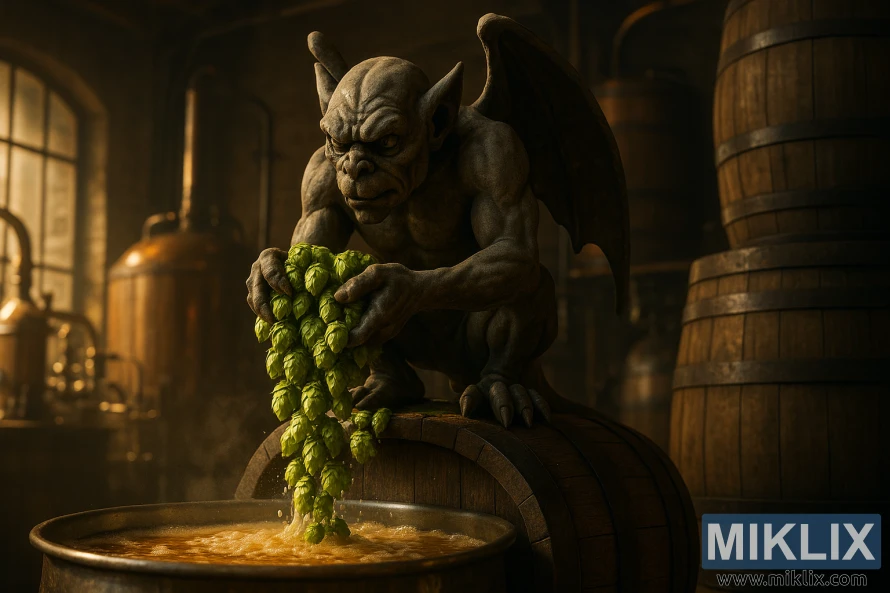
Growing and Harvesting Techniques
The cultivation of Gargoyle hops in the U.S. demands precise techniques for high-quality yields. Primarily grown in the United States, these hops are carefully nurtured. This ensures they retain their unique characteristics.
Hop harvesting is a critical process that requires precision and timing. Gargoyle hops are harvested in late summer to early fall. This is when the cones are fully ripe. This period is key as it affects the flavor and aroma of the hops.
Effective hop growing techniques include:
- Training vines on trellises to maximize sunlight exposure
- Regular pruning to promote healthy growth
- Monitoring soil conditions to optimize nutrient uptake
During harvesting, farmers carefully hand-pick or mechanically collect the hop cones. This is done to ensure minimal damage. The harvested hops are then dried to remove excess moisture. This locks in their flavor and aroma.
The combination of advanced hop growing techniques and careful harvesting practices results in Gargoyle hops. These hops are highly prized by brewers for their consistency and quality.
Optimal Storage Methods for Gargoyle Hops
To preserve the quality of Gargoyle hops, understanding the best storage methods is key. Proper storage is critical for keeping their flavor and aroma intact.
Gargoyle hops, like other varieties, are sensitive to their environment. Heat, light, and moisture can degrade them, leading to a loss of flavor and aroma. It's essential to store them in conditions that minimize these effects.
The ideal storage conditions for Gargoyle hops include cool, dry environments, away from direct light. Here are some key considerations for optimal storage:
- Store Gargoyle hops in a cool environment, ideally at temperatures below 40°F (4°C).
- Maintain a dry atmosphere to prevent moisture from affecting the hops.
- Keep the hops away from direct sunlight and artificial light sources.
- Use airtight containers or packaging that prevents air from reaching the hops.
- Consider freezing as an option for long-term storage to halt degradation.
By adhering to these storage guidelines, brewers can ensure their Gargoyle hops stay fresh. This is vital for maintaining consistency in beer flavor and aroma.
Best Beer Styles for Gargoyle Hops
Gargoyle hops are celebrated for their citrusy and mango-like flavors. These characteristics make them a perfect match for certain beer styles. They offer brewers a chance to craft beers that are not only flavorful but also unforgettable.
American IPAs and Pale Ales are the top choices for Gargoyle hops. These styles benefit greatly from the hops' citrusy and tropical notes. This combination adds a refreshing twist, balancing the hoppy flavors found in IPAs and Pale Ales.
Brewers using Gargoyle hops can expect a beer with a vibrant flavor. The mango-like notes in Gargoyle hops bring a unique dimension to American IPAs and Pale Ales. This makes these beers stand out in their category. By incorporating Gargoyle hops, brewers can create innovative and delicious beers.
- Gargoyle hops are ideal for American IPAs due to their citrusy flavor profile.
- Pale Ales also benefit from the unique flavors of Gargoyle hops.
- The mango-like flavors of Gargoyle hops add a distinctive twist to these beer styles.
In conclusion, Gargoyle hops are a versatile ingredient that can enhance various beer styles, most prominently American IPAs and Pale Ales. Their unique flavor profile makes them a great choice for brewers eager to try new recipes.
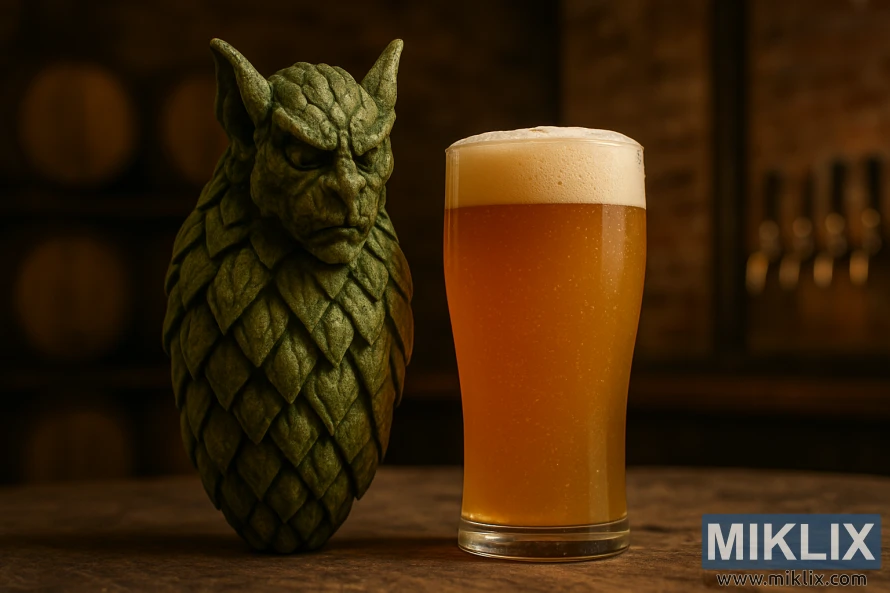
Brewing Techniques with Gargoyle Hops
Using Gargoyle hops in brewing can greatly improve a beer's taste and smell. These hops are versatile and can be used at different stages of brewing.
The mashing process is key to getting the right flavors and sugars from malt. With Gargoyle hops, brewers can tweak the mashing temperature. This helps extract more alpha acids, which add bitterness to the beer.
Boiling is another important step where Gargoyle hops shine. During boiling, hops are added at various times to control bitterness, flavor, and aroma. For Gargoyle hops, adding them in the late boil or whirlpool helps keep their aromatic qualities intact.
- Early boil additions for bitterness
- Late boil additions for flavor
- Whirlpool additions for aroma
Adjusting brewing techniques like mashing and boiling times can enhance flavor and oil extraction from Gargoyle hops. This flexibility allows brewers to craft a variety of beers. Each beer can highlight the unique traits of Gargoyle hops.
Alpha Acid Content and IBU Calculations
The alpha acid content of Gargoyle hops is a critical factor in beer brewing. It directly impacts the International Bitterness Units (IBU) of the final product. Alpha acids are responsible for the bitter flavor in beer. Understanding their concentration in Gargoyle hops is essential for achieving the desired bitterness level.
Gargoyle hops have a specific alpha acid content that can vary. This variation depends on growing conditions and harvesting techniques. Typically, Gargoyle hops have an alpha acid content ranging from 12% to 15%. This range allows brewers to adjust their hopping rates to achieve the perfect balance of bitterness in their beers.
To calculate IBUs, brewers use formulas that take into account the alpha acid content of the hops. They also consider the weight of the hops and the volume of the brew. The most common formula used is the Tinseth formula. It provides a reliable estimate of IBUs based on these parameters.
- Determine the alpha acid content of Gargoyle hops from the supplier or through laboratory analysis.
- Calculate the weight of Gargoyle hops required based on the desired IBU level and brew volume.
- Apply the Tinseth formula or a similar IBU calculation method to determine the bitterness contribution of Gargoyle hops.
By mastering IBU calculations and understanding the alpha acid content of Gargoyle hops, brewers can create a wide range of beer styles. They can achieve precise bitterness levels. This knowledge is critical for recipe development and ensuring consistency across batches.
Common Brewing Challenges and Solutions
Reaching the perfect balance of bitterness and flavor is a common hurdle when brewing with Gargoyle hops. Brewers face the challenge of optimizing these hops' unique traits in their beers.
Managing the alpha acid content and IBU levels is a primary difficulty. Gargoyle hops have a distinct alpha acid profile. This can greatly affect the beer's bitterness.
- Adjust the amount of Gargoyle hops used in the brewing process to achieve the desired balance of bitterness and flavor.
- Modify mashing and boiling times to optimize hop utilization and minimize imbalances.
- Control fermentation conditions, such as temperature, to ensure the unique characteristics of Gargoyle hops are preserved.
By understanding the common brewing challenges with Gargoyle hops and implementing these solutions, brewers can create high-quality beers. These beers will showcase the unique flavor and aroma profiles of these hops.
Some key considerations for brewers include:
- Monitoring alpha acid content and adjusting hop quantities.
- Experimenting with different mashing and boiling techniques to optimize hop utilization.
- Maintaining consistent fermentation conditions to preserve the integrity of the hops.
By adopting these strategies, brewers can effectively address common brewing challenges. They can produce exceptional beers featuring Gargoyle hops.
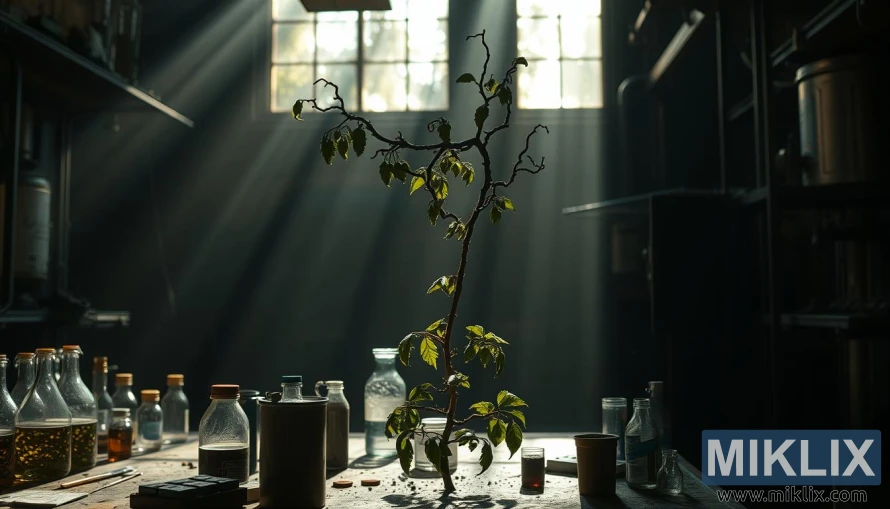
Recipe Development Guidelines
To craft exceptional brewing recipes, brewers must grasp the distinct flavor profile of Gargoyle hops. It's vital to balance their bitterness and flavor. This balance is key to highlighting their unique characteristics in recipes.
When crafting recipes with Gargoyle hops, choosing the right malt and yeast is critical. The malt backbone should enhance the hop's flavor without dominating it. Opt for yeast strains that boost the hoppy flavors and aromas.
Brewing techniques significantly impact the extraction of flavors and oils from Gargoyle hops. Dry-hopping and late-hop additions can significantly improve the beer's aroma and taste. By fine-tuning the brewing process, brewers can bring out the complex and balanced flavors of Gargoyle hops.
Here are some key considerations for recipe development with Gargoyle hops:
- Balance the bitterness and flavor contributed by the hops.
- Select malt and yeast combinations that complement the hop's characteristics.
- Adjust brewing techniques to optimize hop flavor and aroma extraction.
By carefully considering these factors, brewers can create innovative recipes. These recipes will showcase the versatility and unique qualities of Gargoyle hops.
Commercial Beers Featuring Gargoyle Hops
Examining commercial beers with Gargoyle hops offers brewers valuable insights. This hop variety is used in a variety of beer styles, highlighting its versatility and distinct flavor. It showcases the unique characteristics that Gargoyle hops bring to the brewing process.
Several notable breweries have showcased Gargoyle hops in their beers. For example, some have used them in pale ales and IPAs. This highlights their aromatic and bitter qualities, making them a favorite among brewers.
- A pale ale brewed with Gargoyle hops for added citrus and floral notes.
- An IPA that utilizes Gargoyle hops for its unique bitterness and aroma.
- A seasonal beer that incorporates Gargoyle hops to enhance its overall flavor profile.
These examples illustrate the versatility of Gargoyle hops in different beer styles. By studying these commercial beers, brewers can gain a deeper understanding of how to use Gargoyle hops in their own creations. This knowledge can help them achieve the desired flavors and aromas in their brews.
Pairing Food with Gargoyle-Hopped Beers
Gargoyle hop beers offer a versatile pairing experience, complementing a range of dishes with their unique flavor profile. The distinct characteristics of Gargoyle hops make them an excellent choice for pairing with various foods. This includes spicy dishes to citrusy desserts.
When pairing food with Gargoyle-hopped beers, consider the beer's overall flavor profile. This includes its bitterness, acidity, and fruitiness. The hop's flavor characteristics can complement or contrast with the food. This creates a harmonious or interesting combination.
- Spicy dishes, such as Thai or Indian cuisine, where the hop's bitterness can help cut through the heat.
- Citrusy desserts, like lemon bars or orange creamsicle cheesecake, where the hop's citrus flavors can complement the dessert's citrus notes.
- Grilled meats or vegetables, where the hop's earthy and herbal notes can enhance the smoky flavors.
By understanding the flavor characteristics of Gargoyle hops and the beer styles in which they are used, brewers and beer enthusiasts can select the perfect food pairings to complement the beers. Experimenting with different pairings can help you find your new favorite combination.
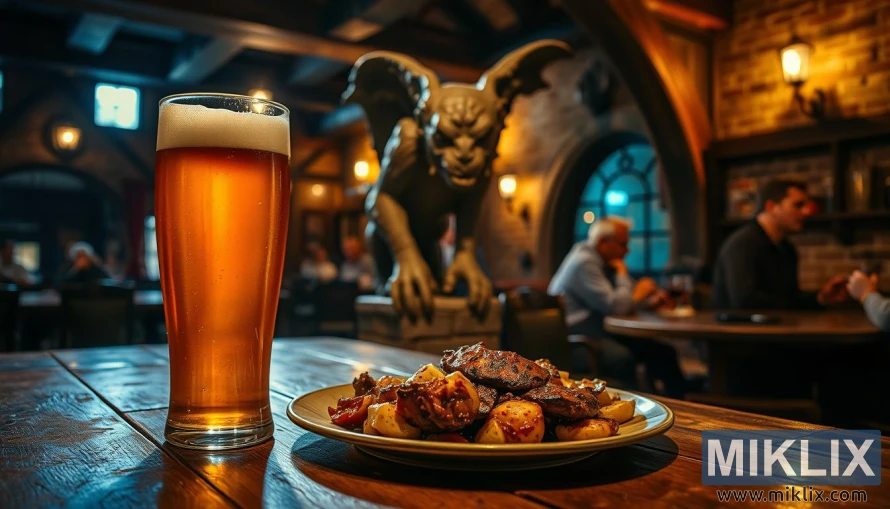
Seasonal Considerations for Brewing
Seasonal changes can greatly affect the taste of beers brewed with Gargoyle hops. Temperature and humidity play a significant role in shaping the hops' characteristics. Brewers must grasp these seasonal factors to achieve the best results.
The flavor of Gargoyle hops varies with the season. Warmer months can bring out the citrus notes, while cooler months highlight the earthy undertones.
To enhance the flavor and aroma of beers with Gargoyle hops, brewers should adjust their recipes and techniques seasonally. Here are some tips:
- Keep an eye on temperature and humidity levels to maintain consistency.
- Adjust the amount of hops used based on the season to get the right flavor.
- Try different brewing methods, like dry-hopping, to highlight the hop's unique traits.
By adapting to seasonal changes, brewers can craft a variety of beers with Gargoyle hops. Each beer will have its own distinct flavor profile.
Quality Assessment and Testing
To brew exceptional beer, evaluating Gargoyle hops quality through rigorous testing is essential. The quality of hops significantly impacts the beer's flavor, aroma, and character. Gargoyle hops, with their unique properties, need thorough assessment to meet brewer standards.
Several key tests assess Gargoyle hops quality. These include alpha acid content analysis and moisture testing. Alpha acid content determines beer bitterness and stability. Moisture testing prevents spoilage, preserving hops' flavor and aroma.
Alpha acid content analysis measures the percentage of alpha acids in hops. This is critical for beer bitterness. Gargoyle hops have a moderate alpha acid content, fitting various beer styles. Analyzing alpha acid content helps brewers adjust recipes for the desired bitterness.
Moisture testing is also vital for Gargoyle hops. High moisture can cause mold, bacterial growth, and flavor loss. Ensuring optimal moisture levels preserves hop quality and prevents brewing issues.
- Alpha acid content analysis for bitterness evaluation
- Moisture testing to prevent spoilage and preserve flavor
- Regular quality assessment to ensure consistency
In conclusion, quality assessment and testing of Gargoyle hops are critical in brewing. Thorough tests ensure hops meet standards, leading to better beer. Regular assessment helps refine recipes and techniques, resulting in consistent, exceptional brews.
Conclusion: Mastering Gargoyle Hops in Your Brewing Journey
Mastering Gargoyle hops is a key step in improving your brewing skills and crafting exceptional beers. By grasping the unique traits and brewing methods for Gargoyle hops, brewers can enhance their use. This leads to beers with distinct flavors and aromas.
As you experiment with Gargoyle hops, you'll create high-quality beers that shine in the craft brewing scene. Whether for personal enjoyment or commercial goals, this knowledge empowers brewers to make better choices. It refines their craft.
Continuing your brewing journey with Gargoyle hops opens up new flavors and beer styles. It boosts your skills and creativity in brewing.
Further Reading
If you enjoyed this post, you may also like these suggestions:
